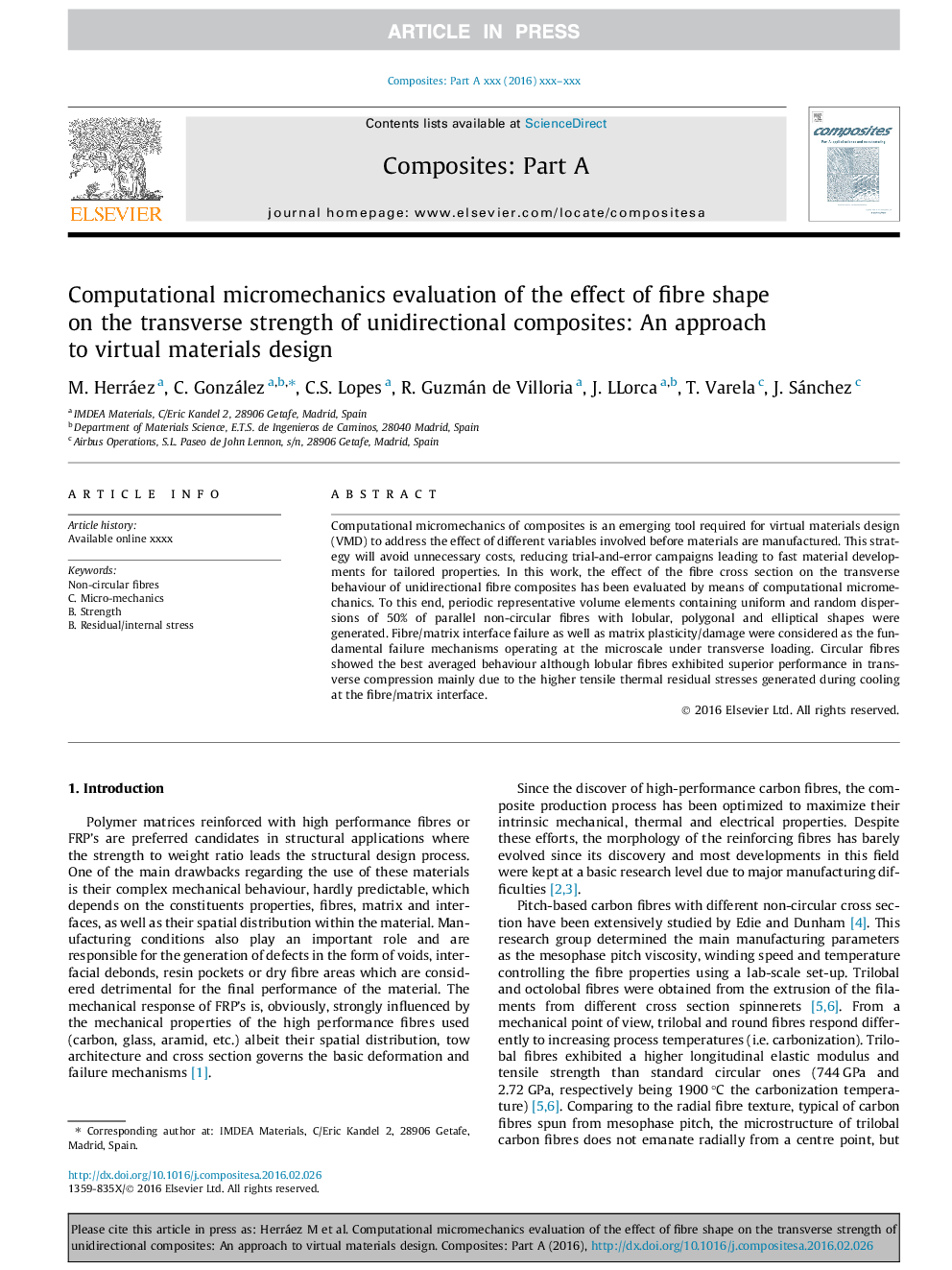| Article ID | Journal | Published Year | Pages | File Type |
|---|---|---|---|---|
| 5439792 | Composites Part A: Applied Science and Manufacturing | 2016 | 9 Pages |
Abstract
Computational micromechanics of composites is an emerging tool required for virtual materials design (VMD) to address the effect of different variables involved before materials are manufactured. This strategy will avoid unnecessary costs, reducing trial-and-error campaigns leading to fast material developments for tailored properties. In this work, the effect of the fibre cross section on the transverse behaviour of unidirectional fibre composites has been evaluated by means of computational micromechanics. To this end, periodic representative volume elements containing uniform and random dispersions of 50% of parallel non-circular fibres with lobular, polygonal and elliptical shapes were generated. Fibre/matrix interface failure as well as matrix plasticity/damage were considered as the fundamental failure mechanisms operating at the microscale under transverse loading. Circular fibres showed the best averaged behaviour although lobular fibres exhibited superior performance in transverse compression mainly due to the higher tensile thermal residual stresses generated during cooling at the fibre/matrix interface.
Related Topics
Physical Sciences and Engineering
Materials Science
Ceramics and Composites
Authors
M. Herráez, C. González, C.S. Lopes, R. Guzmán de Villoria, J. LLorca, T. Varela, J. Sánchez,
